People who see crested ducks for the first time are usually awed by their beauty, as these ducks are truly second to none. If you’re interested in raising crested ducks, you need to know as much as you can about them first.
To learn more about the crested duck breed, continue reading this article.
Table of Contents
History and Origin
The exact origin of crested ducks is not known. However, we are sure that crested ducks have been in existence since before the 1600s because they were in Dutch paintings from the 17th century.
What we do know is that crested ducks came to the United States around the 1800s and were approved or recognized by the American Poultry Association (APA) in 1874.
In 1910, crested ducks were admitted to The Poultry Club of Great Britain (PCGB).
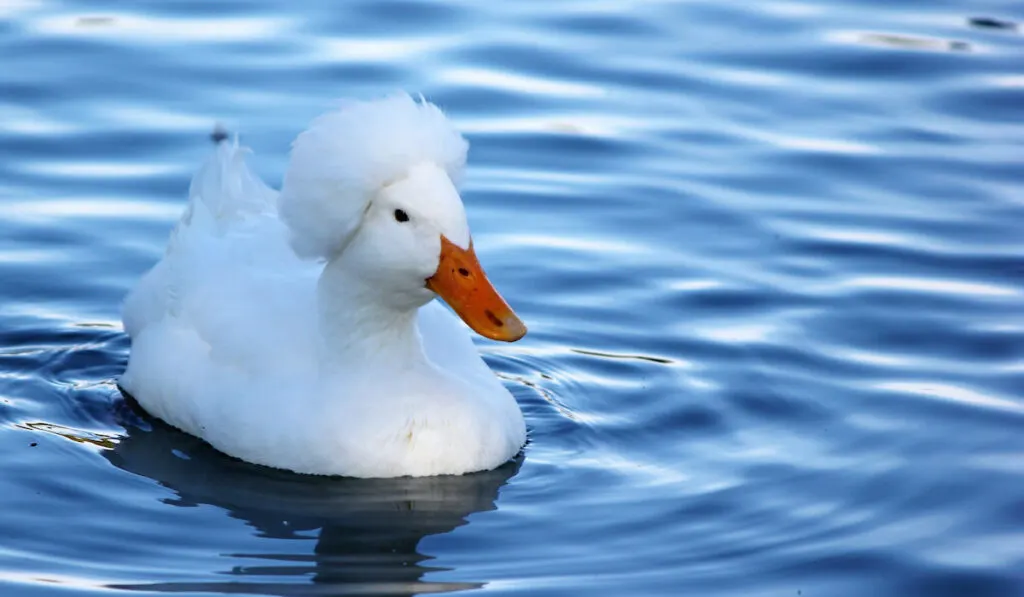
Characteristics
The easiest way to distinguish crested ducks is by looking at their head, which is mostly covered by a round head crest.
The crest resembles a poofy halo, and the birds look like people wearing bonnets.
Size
Crested ducks are not very large ducks.
Crested duck drakes weigh around 7 pounds (3.2 kg). As for the female ducks, they weigh 6 pounds (2.7 kg). These ducks stand around 20-24 inches tall.
Note that these size specifications are the average for mature birds.
Color
There are many varieties of crested ducks, as they can come in gray, black, white, and many other colors (recognized by the APA).
For white crested ducks, which are the most popular, their beaks and legs are pale orange. As for the silver appleyards, they have legs and beaks that are dark gray.
Eggs
The beautiful crested duck often lays 100-130 extra-large eggs. Their eggs are mostly white.
The eggs also have a rich flavor and large yolks, so farmers across the world raise these ducks to produce eggs. Each egg weighs 2.8-3 ounces (80-90 grams).
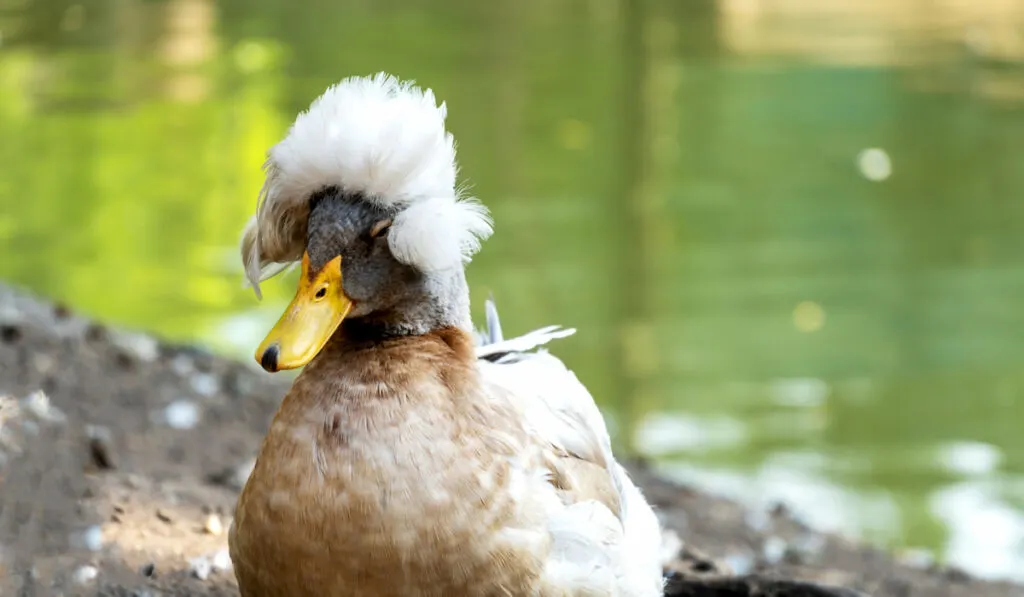
Lifespan
The crested duck has a lifespan of between eight and twelve years, so long as you take proper care of them. In the wild, birds did quickly due to predators and diseases.
If you can eliminate these threats and feed the birds properly, they will live long.
Sexing
Differentiating between a male and female crested duck is easy.
Male crested ducks have larger crests on their heads. Also, the males are more likely to have curled tails while those of the females are straight.
If you see curly tail feathers, the duck is male.
If there are no curly feathers, the duck is most likely a female. However, it could also be a male that is yet to grow curly feathers or has lost his curly feathers.
Behavior and Temperament
Crested ducks are nervous birds, so they will most likely run away from your neighbors and people they do not know. However, they are very friendly if you bond with them, and you’ll enjoy their company.
They are very social birds, and you can easily keep as many as you want, even with other types of birds.
Another cool feature of crested ducks is that they are quiet. This means that if you do not want to raise ducks because of their noise, you can raise crested ducks, as they usually do not make noise.
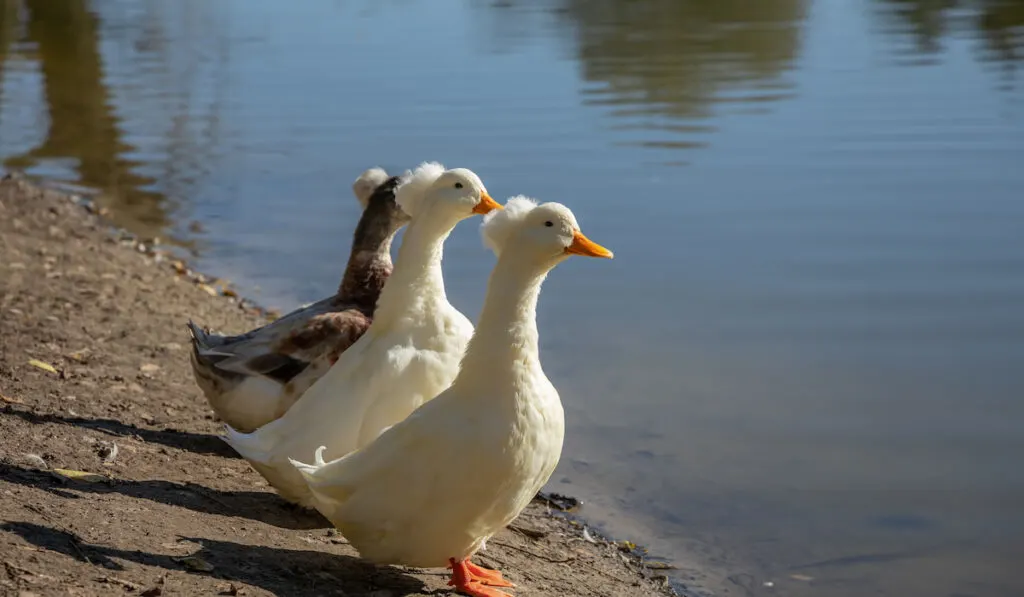
Uses
Crested ducks are mostly raised as pets because of their cute appearance and behavior.
Unlike many other ducks, these ducks are calm and do not disturb their neighbors. Well, they do have other uses worth discussing.
Ornamental
When you raise crested ducks in your yard, you and your neighbors will enjoy the sight of these ducks.
While they walk gracefully around your home, you will not be disturbed by loud quacks as in the case of other duck breeds.
Crested ducks are also hardy even though they are beautiful, so keeping them for a long time is very possible.
When you want to choose a breed to raise, go for your favorite colors. However, also put their size into consideration, as new ducks come in varying sizes according to what the parent crested duck looks like.
You should also consider making the home of your ducks comfortable for them by providing a pool for them to float and cool their temperature, especially on hot summer days.
Breeding
Breeding animals is a fun and educational thing to do, as you can get a new breed with your favorite attributes from other breeds.
If you love the colors or crests of crested ducks, you can breed them with other ducks with a more-suitable growth rate and hardiness.
If you breed them well, you may get the perfect offspring that has the exact qualities that you want. People in many places breed crested ducks with others to produce offspring for different purposes.
Of course, the most common purpose is raising the ducks as ornamental ducks, as there will be more variations for people to choose from.
What breed would you like to cross with your crested ducks with?
Egg Production
Something cool about crested ducks is that they start to lay eggs just around six or even five months of age.
These beautiful ducks can lay as many as 100-130 eggs yearly. However, note that they stop egg production in the winter months due to the cold.
If you want the ducks to keep laying eggs, you’ll need to take their winter care more seriously (to be discussed later).
The crested duck eggs have large yolks which makes them very suitable to making baked products.
Their eggs are also rich in flavor, so you will get a more authentic taste from their eggs when compared to the eggs of other ducks. This is why a lot of farmers keep crested ducks, for their eggs’ sweet taste.
Meat Production
Most crested ducks that are often raised in the U.S. today are generally meant as sources of meat.
Many other crested ducks are raised solely for their ornamental value while some others are basically for egg production.
The ones used for egg production are also sometimes used for meat when farmers have a replacement and sometimes when the birds are too old to continue laying.
Crested ducks may not be as large as other meat-producing ducks or chickens, but they do produce good quality, edible meat, which many people across the world love to eat.
However, note that if you want to raise ducks for meat production, crested ducks are not the best ducks to start with.
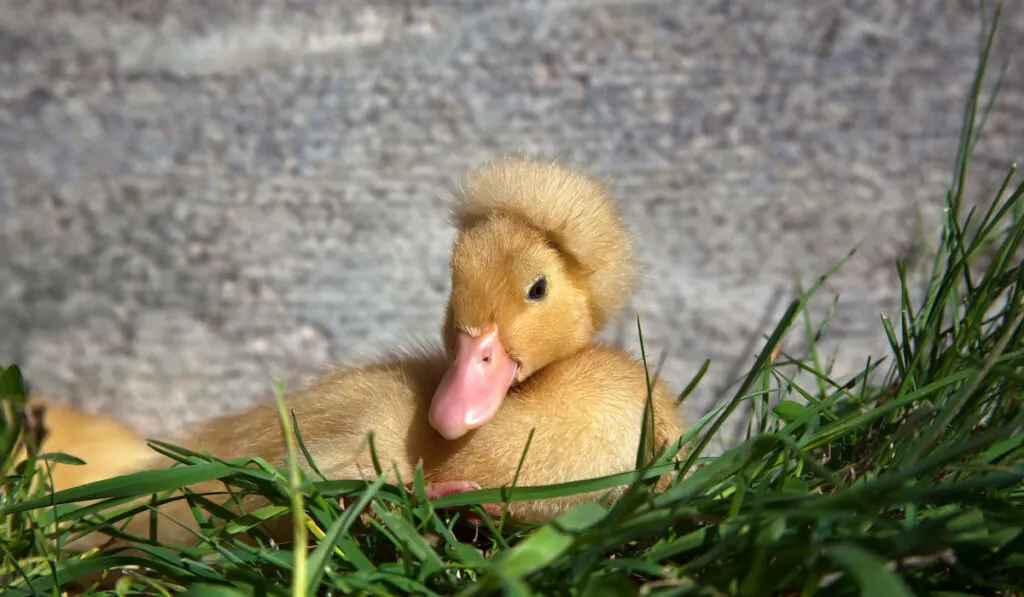
Hatching and Raising Crested Ducks
Of course, the reason why you need to learn about crested ducks is so that you can effortlessly raise them, right?
It’s time to discuss some tips to raise them.
A crucial tip that helps in raising healthy crested ducks is to take vaccination seriously even though these ducks are generally hardy birds.
Incubating and Hatching
There are two major ways to incubate crested duck eggs:
- The natural way: By “natural,” we mean leaving the eggs to be hatched by the hens. This is advantageous as you won’t spend a lot of money, and the ducklings can bond with their mothers. However, new mother hens may stop egg production and may not eat as much as they should, causing them to lose weight.
- Using an incubator: go to any feed mill or poultry shop to buy an incubator. Go for incubators that are suitable for ducks, putting the size of your crested duck eggs into consideration.
So long as the eggs are kept in a place with the right temperature and humidity, they will hatch within 28 days.
Housing
A coop measuring 4 feet wide, 4 feet long, and three feet tall is suitable for three to five crested ducks.
When housing your crested ducks, you must put proper ventilation into consideration, as a lack of ventilation is very harmful to crested ducks.
As birds known for their plumage and crests, you can only keep the feathers of crested ducks pest-free when the coop is not too humid.
A highly humid coop is a breeding ground for microbes, which hide in the plumage of birds. To avoid this, make sure that the coop is well-ventilated. Also, the coop should stay clean.
For temperature fluctuations, make sure that the coop has heat lamps and is well insulated against the cold.
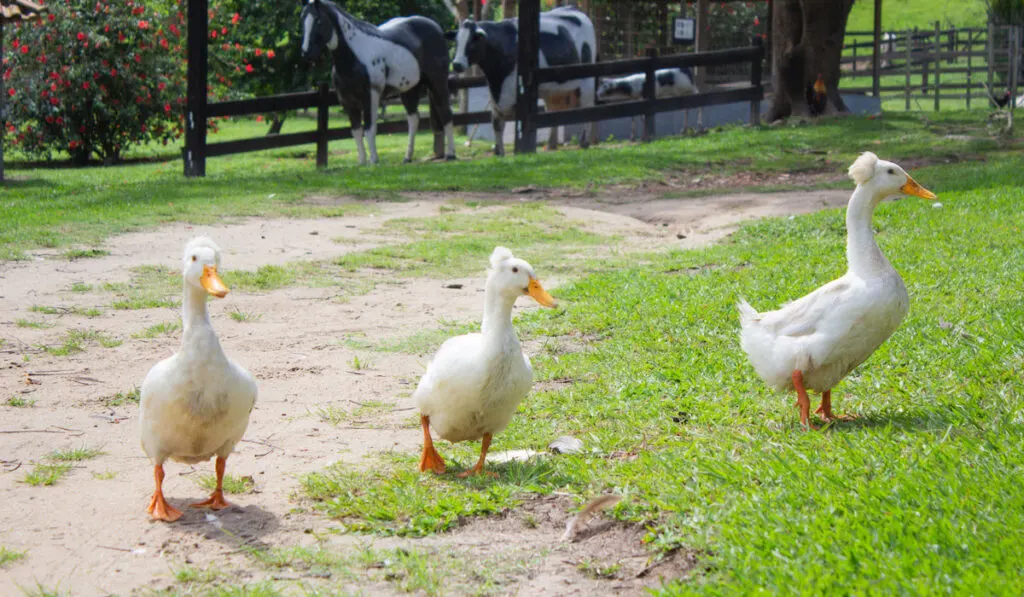
Feeding
You need to feed your ducks properly if you want them to grow healthy and quickly. Just like every other animal, here are some essential nutrients that crested ducks need:
- Proteins: Proteins are the building blocks of your crested ducks. The flesh, plumage, and many organs in animals are made of proteins, so give your crested ducks a lot of proteins. Seeds, grains, formulated feeds, and invertebrates are rich in proteins for your ducks.
- Carbohydrates: Carbohydrates give your ducks energy and also help to fatten them. With carbohydrates, the birds may not easily digest their food. Grains are the major sources of carbohydrates for birds.
- Fiber: Fibers often help with the digestion of food in your birds. They also help to save a lot of money, as they are cheap and prevent birds from eating too many proteins and carbs. Wheat bran, rice husk, etc. are popular sources of fiber for birds.
- Calcium: Birds lay a lot of eggs, so they need calcium to produce the shells. Calcium is also vital to give your birds strong bones and boost their immune systems. Along with calcium supplements, you should feed your birds with a lot of crushed bones and eggshells.
- Vitamins and minerals: The secret of raising healthy crested ducks is to boost their immune systems with minerals and vitamins. Fruits and vegetables are cool sources of these nutrients. Note that calcium is a mineral.
So long as your crested ducks get the right food at the right proportions, they will grow just fine. If you do not know what to feed your birds, give them formulated feed (mash).
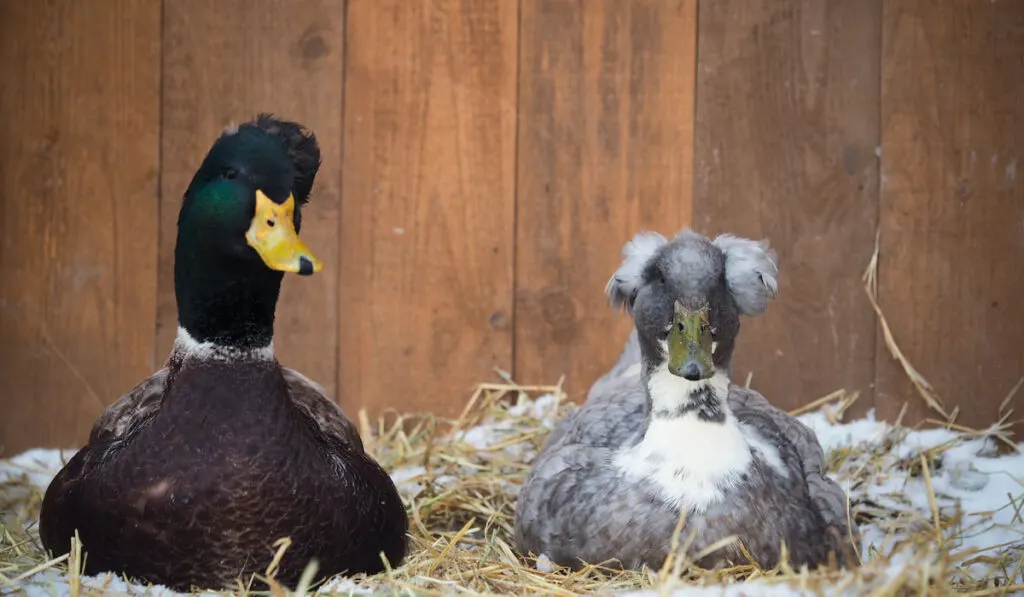
Winter Care
If you want your crested ducks to continue laying eggs even during the winter months, you need to properly care for them when winter comes.
Even if you are not interested in egg production, you still need to make sure that your birds are doing fine in their coop. Egg production will indicate if the birds are fine or not.
Some winter care tips are:
- Install heat lamps: Heat lamps are vital, as they can help to regulate the temperature of the coop at your will.
- Insulate the coop floor: To keep the feet of your crested ducks warm, make sure that they do not walk on bare ground. You can achieve this by adding bedding to the ground, as bedding serves as insulation for the floor.
- Make sure that the coop stays ventilated: Even though you want the coop to be warm, it should still be ventilated and permit the proper flow of air so that your birds do not suffocate inside. You can achieve this by opening the upper windows.
- Give your ducks some grains: Digesting corn and other grains can keep your crested ducks warm, especially at night.
- Always check the water of your ducks: Do not leave freezing water in the coop. Change the water regularly so that it stays warm or at room temperature.
If your crested ducks are happy in winter, they will surely reward you with some eggs.
Final Thoughts
You should consider raising crested ducks, if not for anything else, at least for the sake of their beauty. Let these ducks keep you and your neighbors happy.
Before starting your crested duck-raising journey, remember to read and make use of the tips in this article.
